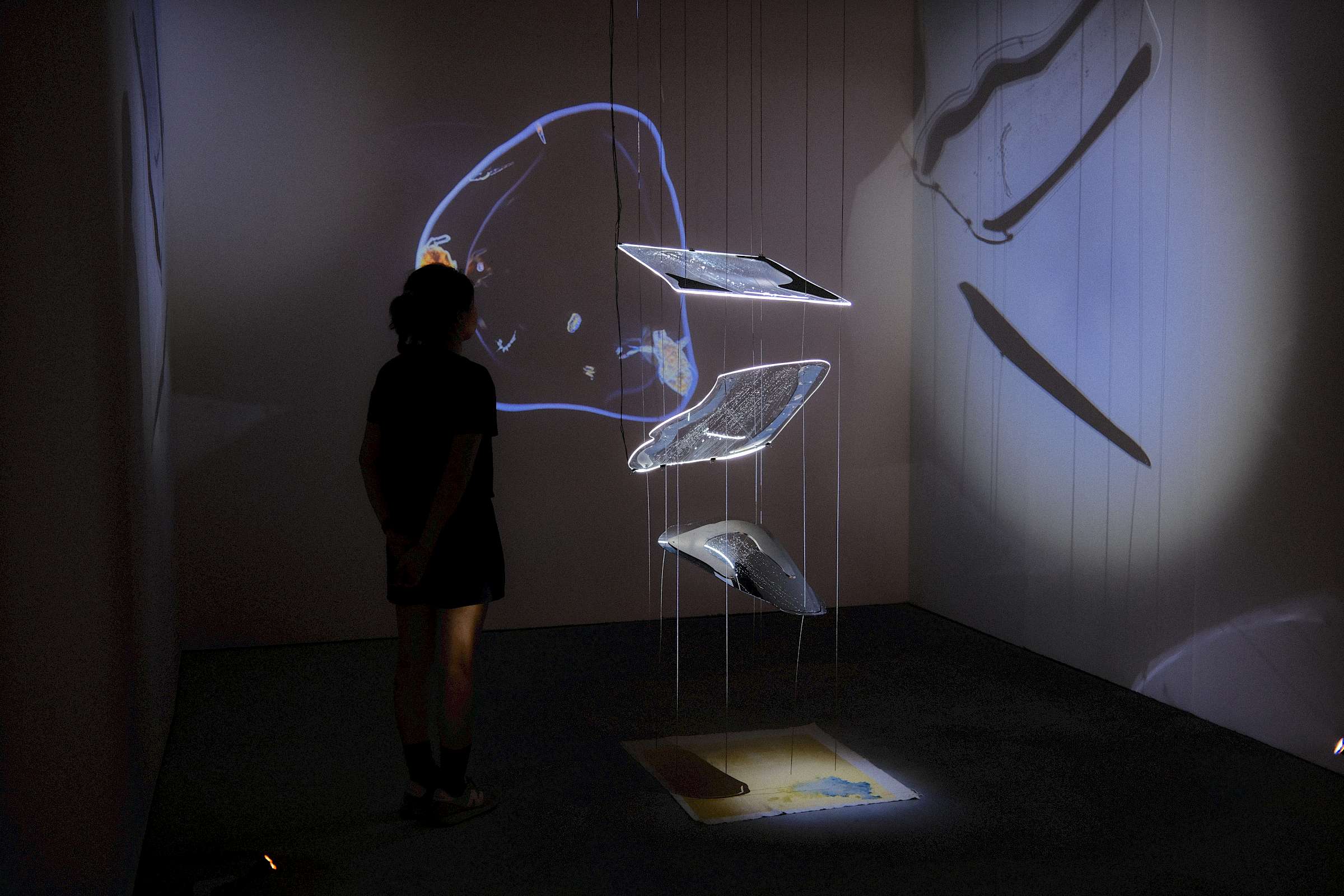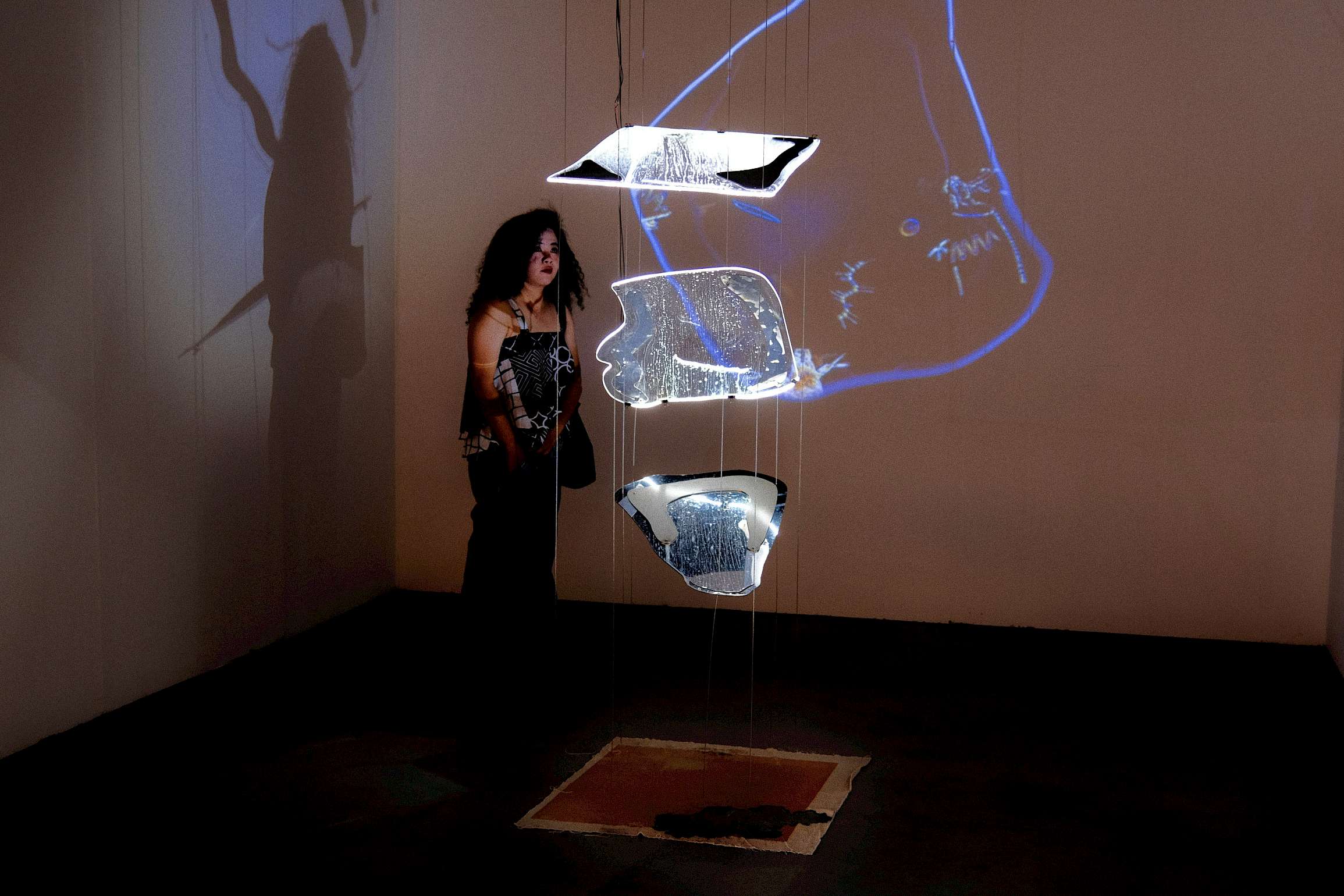Watershed (Tough Love) (2025)
A drop cycling through Kaohsiung across decades: once falling through factory smoke, carrying industrial waste past fishermen; now moving through cleaner channels where workers who once avoided the river's smell return to its banks; the same water that passed through treatment plants now hosts a diversity of plankton; carrying a question about tomorrow, with each ripple, toward the sea.

Watershed (Tough Love) is the first in a series of works examining rivers and their (former) estuaries. This installation explores how water connects all living systems by following a single drop. Water descends through transparent plates—representing its passage through time, ecosystems, and bodies—before landing on specially treated fabrics. As water meets fabric, colours transform, mirroring environmental changes: from industrial contamination to ongoing restoration efforts.
Surrounding visitors is a soundscape of underwater recordings from the Love River—the clicking of shrimp, the movement of fish, the subtle vibrations of current—making audible what typically remains beneath the surface.
The installation reveals that every drop contains multitudes—microscopic life, chemical histories, and future possibilities. Just as the Love River has flowed through Kaohsiung's changing identity, water flows through all bodies, carrying both our environmental choices and their consequences.
Water drips steadily through a series of acrylic plates suspended at different heights. The water follows different paths, pooling briefly on each surface before continuing downward. When droplets hit the treated fabrics below, chemical reactions cause color changes, the fabric gradually shifting through different hues as the water saturates the material.
The underwater audio recordings play continuously through speakers positioned around the space. The soundscape includes the distinctive clicking of shrimp, the movement of fish through water, and the low-frequency sounds of current and sediment. These recordings were captured at various points along the Love River using hydrophones, documenting the actual acoustic environment beneath the water's surface.
Wall projections display microscopic footage of river water samples, showing plankton, algae, and other microorganisms at high magnification.
